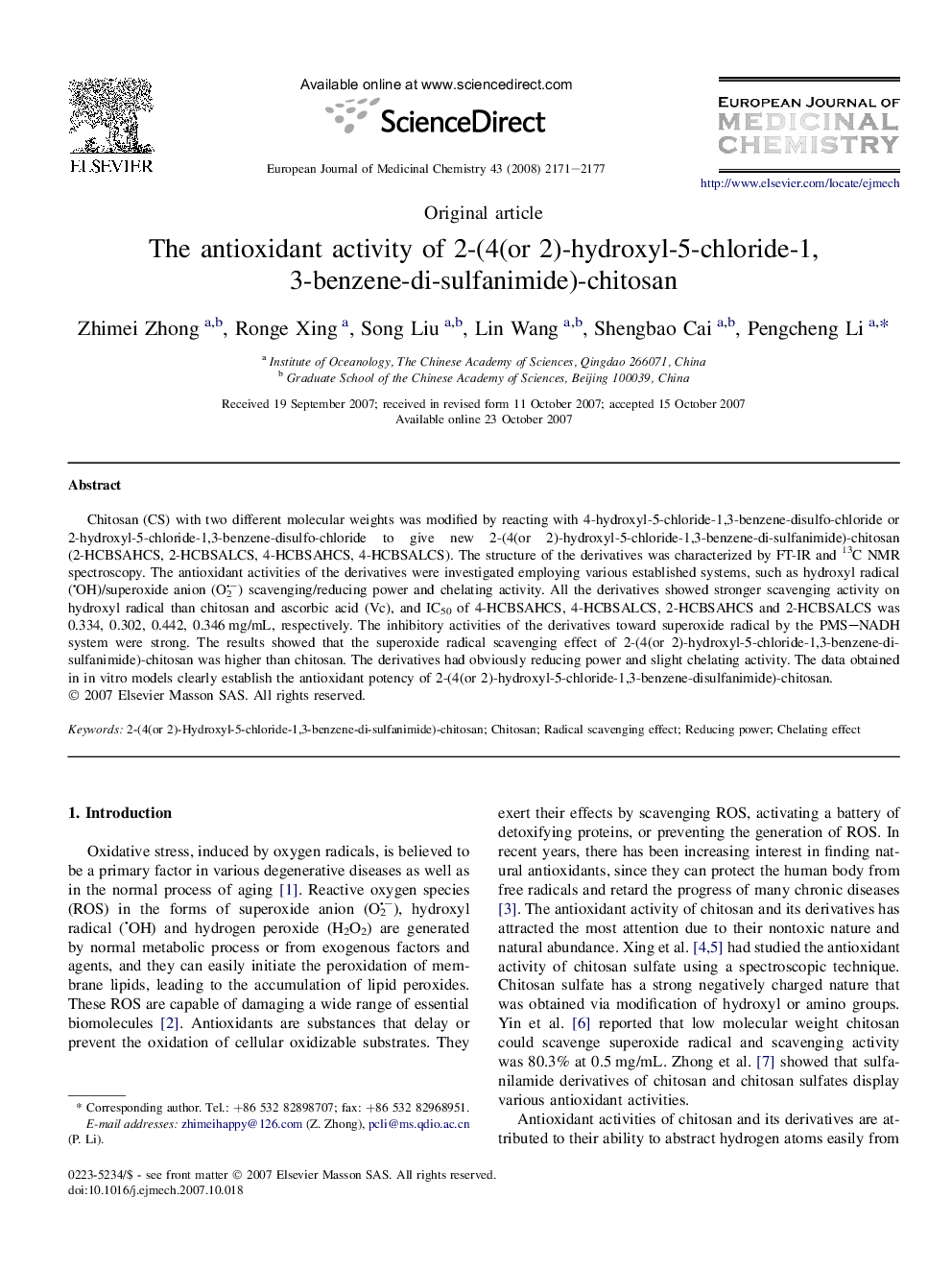| Article ID | Journal | Published Year | Pages | File Type |
|---|---|---|---|---|
| 1393369 | European Journal of Medicinal Chemistry | 2008 | 7 Pages |
Chitosan (CS) with two different molecular weights was modified by reacting with 4-hydroxyl-5-chloride-1,3-benzene-disulfo-chloride or 2-hydroxyl-5-chloride-1,3-benzene-disulfo-chloride to give new 2-(4(or 2)-hydroxyl-5-chloride-1,3-benzene-di-sulfanimide)-chitosan (2-HCBSAHCS, 2-HCBSALCS, 4-HCBSAHCS, 4-HCBSALCS). The structure of the derivatives was characterized by FT-IR and 13C NMR spectroscopy. The antioxidant activities of the derivatives were investigated employing various established systems, such as hydroxyl radical (OH)/superoxide anion (O2−) scavenging/reducing power and chelating activity. All the derivatives showed stronger scavenging activity on hydroxyl radical than chitosan and ascorbic acid (Vc), and IC50 of 4-HCBSAHCS, 4-HCBSALCS, 2-HCBSAHCS and 2-HCBSALCS was 0.334, 0.302, 0.442, 0.346 mg/mL, respectively. The inhibitory activities of the derivatives toward superoxide radical by the PMS–NADH system were strong. The results showed that the superoxide radical scavenging effect of 2-(4(or 2)-hydroxyl-5-chloride-1,3-benzene-di-sulfanimide)-chitosan was higher than chitosan. The derivatives had obviously reducing power and slight chelating activity. The data obtained in in vitro models clearly establish the antioxidant potency of 2-(4(or 2)-hydroxyl-5-chloride-1,3-benzene-disulfanimide)-chitosan.
Graphical abstractNew 2-(4(or 2)-hydroxyl-5-chloride-1,3-benzene-di-sulfanimide)-chitosan was synthesized and characterized. The antioxidant activities of the derivatives were investigated employing various established systems.Figure optionsDownload full-size imageDownload as PowerPoint slide
